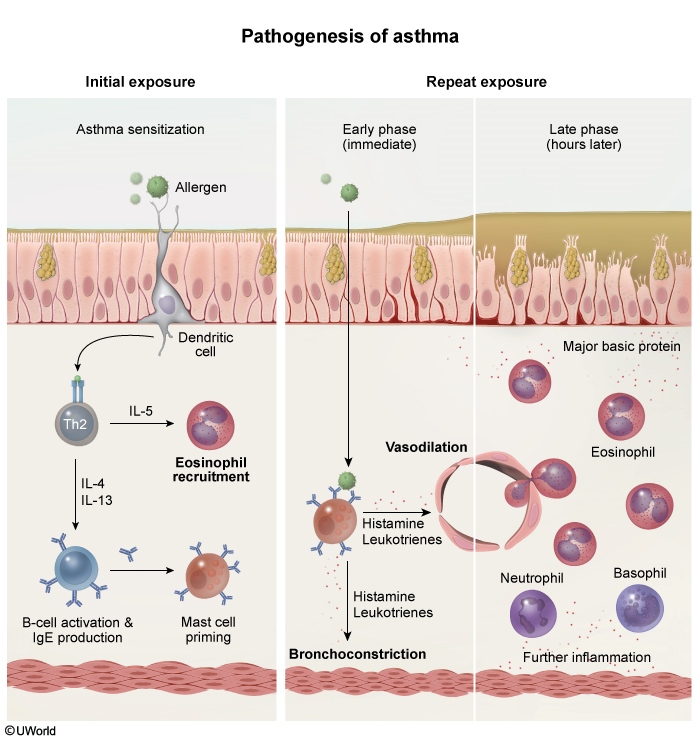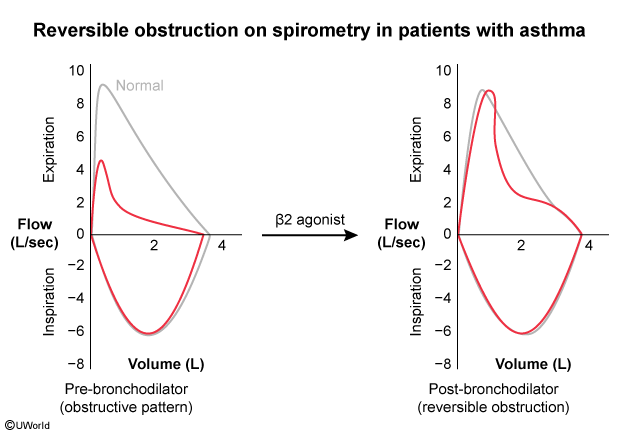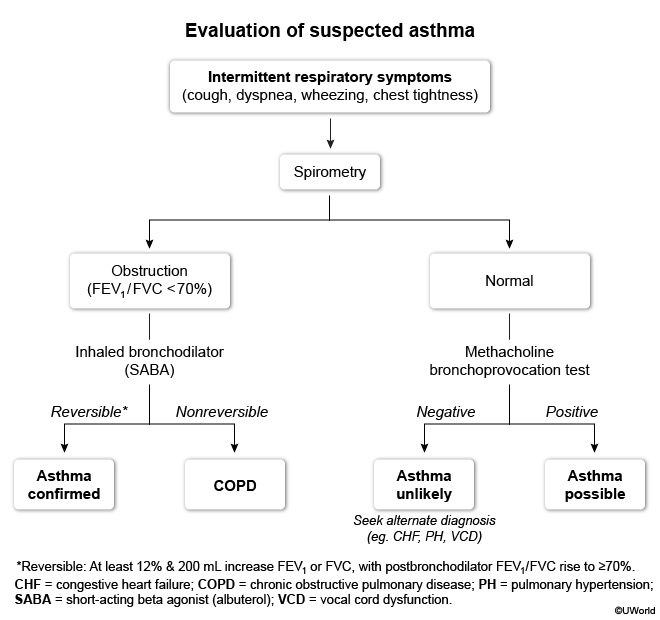Asthma: Pathophysiology And Diagnosis
Article Sections
Introduction
Asthma is a chronic disorder of the airways characterized by reversible airflow obstruction with bronchial hyperresponsiveness and underlying inflammation. This article highlights the pathophysiology and clinical manifestations of asthma; management is detailed in a separate article.
Pathophysiology
The cellular basis of asthma is leukocyte-induced bronchoconstriction (Figure 1). A combination of host susceptibility (eg, atopic genetic background) and environmental exposure (eg, dust mites, tree pollen) are involved in leukocyte priming, specifically upregulating the Th2 axis (ie, IL-5 primes eosinophils, IL-4 and IL-13 prime IgE production).
These primed (sensitized) leukocytes are easily activated (Table 1) under certain circumstances (eg, reexposure to allergen; upper respiratory infection; cold, dry air). When activated, they release preformed inflammatory mediators (eg, histamine, prostaglandins, leukotrienes) that cause episodes of bronchoconstriction, airway edema, and mucus hypersecretion. These events are known as asthma exacerbations.
Continue Learning with UWorld
Get the full Asthma: Pathophysiology And Diagnosis article plus rich visuals, real-world cases, and in-depth insights from medical experts, all available through the UWorld Medical Library.
Figures


